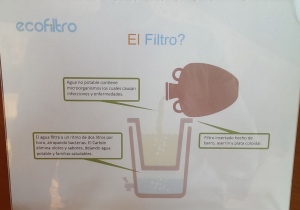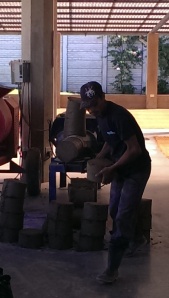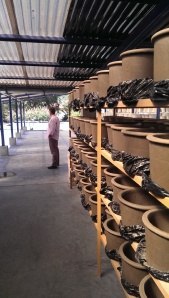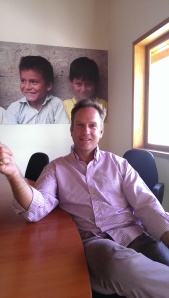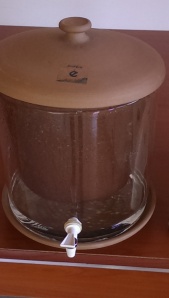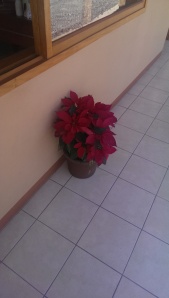In order to use the social tool, Money, we need Currency. Currency to Money is what Words are to a language. But what could serve as Currency? During history, many different things served as Currency: cigarettes, salt, feather, gold, silver, stone disks, notes, coins, digital bits, and many more. Currency is things that serve as symbols. The same way the word “Table” symbolises a physical table so a unit of Currency symbolises value. If to use the measurement of length analogy, then one meter is the symbol that symbolises the physical property of one meter length. A ruler in this case could be the analog for Currency.
What are therefore the characteristics of a Currency, and what would be considered a good Currency verses Bad Currency? Well, Currency has to have the following 5 properties:
(-) Scarcity: final number of the symbols
(-) Fungibility: all symbols are interchangeable, commodity like. Symbol A is identical to symbol B, and vice versa.
(-) Divisibility: the symbols are easily divisible, so you can divide them to smaller and smaller portions
(-) Durability: the symbols can survive the test of time and weahther and won’t be worn out or disappear
(-) Transferability: the symbols can be easily transferred between owners
SCARCITY
Currency should be scarce. The amount of Currency you hold represents your purchasing power. The more Currency you have the more you are likely to be able to purchase. But this is a relative game. The amount of things that can be bought is final and equal the total wealth in the economy. All the Currency in the economy could usually purchase 5% of the wealth in the economy. So if you have a certain amount of Currency, you don’t want your neighbour to just find / produce / counterfeit more Currency since if he does, he would be able to purchase all the wealth and your purchasing power will diminish significantly.
Let’s demonstrate this property using the differences between the Currencies Gold (Commodity Currency), USD (Digital Fiat Currency), and Bitcoin (Decentralised Crypto Digital Currency).
Gold, Commodity Currency: indeed scarce. Hard to find, hard to produce. Seems to be of final amount on earth, very hard to counterfeit.
USD, Digital Fiat Currency: not scarce at all. It is produced by the government / central bank and can be counterfeit by them to an infinite amount at any time (the root of hyper inflations)
Bitcoin, Decentralised Crypto Digital Currency: rare. Only 21 million Bitcoins will ever exist.
FUNGIBILITY
All the symbols of the Currency should be interchangeable. You shouldn’t care if you have one symbol or the other. In order to use the Currency, owners should not be attached to one symbol. Think about Words. You and I can use the word “Table” the word you use and the word I use are not the same thing as you pronounce the one and I pronounce the other, but both represent the same thing.
Gold, Commodity Currency: fungible. Gold is a very coherent commodity. You don’t care if you hold one portion or another portion.
USD, Digital Fiat Currency: fungible. All the digital bits are the same. All the notes, and the coins are the same.
Bitcoin, Decentralised Crypto Digital Currency: fungible. All Bitcoins are interchangeable, there are 21 million Bitcoins and they are all the same. Just strings of numbers. One string is exactly like any another string.
DIVISIBILITY
One of the biggest advantages of the Money system is that it can compare different things on an apples to apples basis, i.e. using a common denominator. It is very hard to compare cars and tomatoes, but it’s easy to denominate the cars in Currency terms i.e. $20,000 and the tomatoes in Currency terms i.e. $1 and then compare the two numbers. The same way the Currency symbols should be dividable to small units so that they can represent even very small things like a bus ticket, or a bottle of water.
If the Currency is not divisible it’s very hard to exchange items because it will not be easy to exchange the right amount of Currency with any goods and services in the economy.
Gold, Commodity Currency: divisible but not easily. Gold is a soft metal and therefore can be divided, but not so easily. Dividing gold accurately requires the use of scales, etc.
USD, Digital Fiat Currency: very easily divisible. Every Dollar can be divide into 100 cents.
Bitcoin, Decentralised Crypto Digital Currency: infinitely divisible. Every Bitcoin can be divided into 100,000 portions to what is called a Satoshi. But the Bitcoin protocol can be extended to enable devision for even smaller portions of Bticoins.
DURABILITY
Every Currency should survive the tests of time and weather. You don’t want to receive Currency and discover that it was dissolved, broken, or was worn out after a year. If you want to leave it to your family, you want it to survive the test of time and bad weather. You want it to stay constant.
Gold, Commodity Currency: very durable metal. Can survive thousands of years and extreme weather condition.
USD, Digital Fiat Currency: 95% of the Currency is a digital bits and will survive as long as the network survives. Very durable Currency.
Bitcoin, Decentralised Crypto Digital Currency: 100% of the Currency is digital and will survive as long as the network survives. The network itself is decentralised and therefore is very hard to be destroyed. Very durable Currency.
TRANSFERABILITY
The whole concept of Money is based on people or entities that exchange Currencies between each other. Therefore, Currencies should be easily transferable from one person the another. Truth to be said, even if the Currency is very hard to be transferred like in the case of the Rai stones, the huge stone disks on the island Yap, it can still serve as Currency. In Yap, even though some of the disks couldn’t be moved, their ownership was transferred between individuals and / or families.
Gold, Commodity Currency: not so easy to store and transfer. Most of the Gold is being held in huge vaults and the ownership is represented by legal documents.
USD, Digital Fiat Currency: easy to transfer. Notes and coins are pretty easy to transfer and in any case most of the Currency is held as digital bits which are very easy to be transferred by digital networks.
Bitcoin, Decentralised Crypto Digital Currency: easy to transfer. Every person with an access to the internet can transfer Bitcoins.

